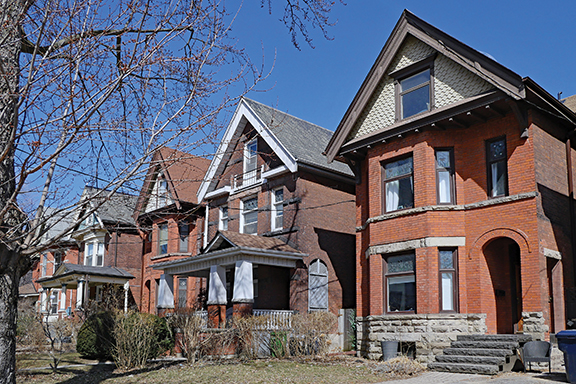Home Price Increases in Opportunity Zone Redevelopment Areas Keeping Pace with Nationwide Gains

Median Values Jump At Least 10 Percent in Almost Two-Thirds of Zones
ATTOM Data Solutions, curator of the nation’s premier property database, released its fourth-quarter 2020 special report analyzing qualified low-income Opportunity Zones established by Congress in the Tax Cuts and Jobs act of 2017. In this report, ATTOM looked at 3,588 zones around the United States with sufficient sales data to analyze, meaning they had at least five home sales in the fourth quarter of 2020.
The report found that median home prices increased from the fourth quarter of 2019 to the fourth quarter of 2020 in 77 percent of Opportunity Zones with sufficient data and rose by more than 10 percent in nearly two-thirds of them. Those percentages were roughly the same as in areas of the U.S. outside of Opportunity Zones.
With prices remaining well below average in most Opportunity Zones, about 38 percent of the zones with enough data to analyze still had median prices of less than $150,000 in the fourth quarter of 2020. However, that was down from 46 percent a year earlier as prices inside some of the nation’s poorest communities rolled ahead with broader market, defying troubles flowing from the 2020 Coronavirus pandemic that slowed or idled significant sectors of the U.S. economy.
The pandemic’s impact generally has hit hardest in lower-income communities that comprise most of the zones targeted for tax breaks designed to spur economic redevelopment. Housing markets inside Opportunity Zones continued to benefit from the nation’s nine-year price boom.
Opportunity Zones are defined in the Tax Act legislation as census tracts in or alongside low-income neighborhoods that met various criteria for redevelopment in all 50 states, the District of Columbia and U.S. territories. Census tracts, as defined by the U.S. Census Bureau, cover areas with 1,200 to 8,000 residents, with an average of about 4,000 people.
“The country’s long run of home-price increases continues to leave no part of the housing market untouched, boosting fortunes from the wealthiest to the poorest parts of the United States. The latest evidence is the fourth-quarter 2020 data showing prices going up in Opportunity Zone neighborhoods at around the same rate, and sometimes more, than in more well-off communities,” said Todd Teta, chief product officer with ATTOM Data Solutions. “No doubt, prices remain substantially lower in Opportunity Zones, but the fact that they often rose by double-digit percentages in Q4 is significant. Not only does it show market strength, but it also suggests that many distressed communities are ripe for the redevelopment that the Opportunity Zone tax breaks are designed to promote.”
High-level findings from the report
- Median prices of single-family homes and condos rose from the fourth quarter of 2019 to the fourth quarter of 2020 in 77 percent of Opportunity Zones with sufficient data to analyze and increased in 58 percent of the zones from the third to the fourth quarters of 2020. By comparison, median prices rose annually in 79 percent of census tracts outside of Opportunity Zones and quarterly in 58 percent of them. (Of the 3,588 Opportunity Zones included in the report, 3,183 had enough data to generate usable median prices in the fourth quarters of both 2019 and 2020; 3,179 had enough data to make comparisons between the third and fourth quarters of 2020).
- Measured year over year, median home prices rose more than 10 percent in the fourth quarter of 2020 in 1,945 (61 percent) of Opportunity Zones with sufficient data to analyze. That price increase occurred in 56 percent of other census tracts throughout the country with sufficient data.
- A wider gap emerged when looking at areas where prices rose at least 25 percent from the fourth quarter of 2019 to the fourth quarter of 2020. Measured year over year, median home prices rose by that level in 1,098 (34 percent) of Opportunity Zones and 24 percent of census tracts elsewhere in the country.
- States with the largest percentage of zones with median prices that rose, year over year, during the fourth quarter of 2020 included Utah (median prices up, year over year, in 89 percent of zones), Oregon (86 percent), Washington (85 percent), Arizona (85 percent) and Connecticut (84 percent).
- Of all 3,588 zones in the report, 1,356 (38 percent) had a median price in the fourth quarter of 2020 that was less than $150,000 and 598 (17 percent) had medians ranging from $150,000 to $199,999. The total percentage of zones with typical values below $200,000 was down from 64 percent in the fourth quarter of 2019.
- Median values in the fourth quarter of 2020 ranged from $200,000 to $299,999 in 837 Opportunity Zones (23 percent) while they were at least $300,000 in 797 (22 percent).
- The Midwest continued to have the highest portion of Opportunity Zone tracts with a median home price of less than $150,000 (59 percent), followed by the South (49 percent), the Northeast (40 percent) and the West (6 percent).
- Median household incomes in 89 percent of Opportunity Zones were less than the medians in the counties where they were located. Median incomes were less than three-quarters of county level figures in 59 percent of zones and were less than half in 16 percent.













